A person who is often called upon when a woman has breastfeeding problems in China is the 催乳师, which literally means “push milk worker”. These ladies have had a short course on how to massage the breasts and they learn a bit about what they can recommend as far as food and herbs to stimulate milk production. They know little about breastfeeding. One of the practices they learn is “排残奶”, which means “expressing left-over milk”. The idea is that after weaning, a mom should express any milk that might still be left in the breasts. If she fails to do that, the milk will go bad over a period of time, and will eventually turn into a thick white, yellow or even black substance. After all, the milk sits there in the breasts at a body temperature of 37 oC. Any milk will go bad at such temperatures. (Just like a cup of milk that you leave outside the fridge for a long time.) This old milk that has gone bad will eventually affect the health of the breasts and can even cause cancer. Many breast diseases are caused in this way… at least, that is what they learn.
This idea doesn’t only affect the end of breastfeeding, but also the beginning. Their thinking is: since there might be some “old milk” left in the breasts, one should first empty the breasts before the baby latches on after birth. And when a 催乳师 is called to assist a mom with engorged breasts, she will massage the breasts and might express some milk. However, she will also say that the expressed breast milk should not be given to the baby, because it has been in the breasts for too long, and therefore might have gone bad.
It can be quite an eye opener and lead to interesting discussions when I explain that a breast is not a passive container of milk, but an organ of active production that is stimulated by removal of milk from the breasts. Lack of adequate milk removal or stasis tends to limit breastmilk synthesis in the breasts (Riordan and Wambach, 2010, p. 93). It is therefore not necessary to empty breasts after weaning or prior to baby’s first suckling after birth, neither do we need to throw away expressed breast milk when a mom is engorged.
And what about a mom who still drips milk days or weeks or months after weaning? I continue to explain that, yes, it is common that a mother can express small amounts of milk or serous fluid for weeks, months, or years after weaning. (This is called “galactorrhea”.) Usually, this is nothing to worry about. However, women with persistent galactorrhea should be referred to a physician for a thorough physical examination and biochemical assessment (Riordan and Wambach, 2010, p. 93). The reason for these investigations is not because galactorrhea causes cancer, but to discover the trigger for abnormal milk secretion.
